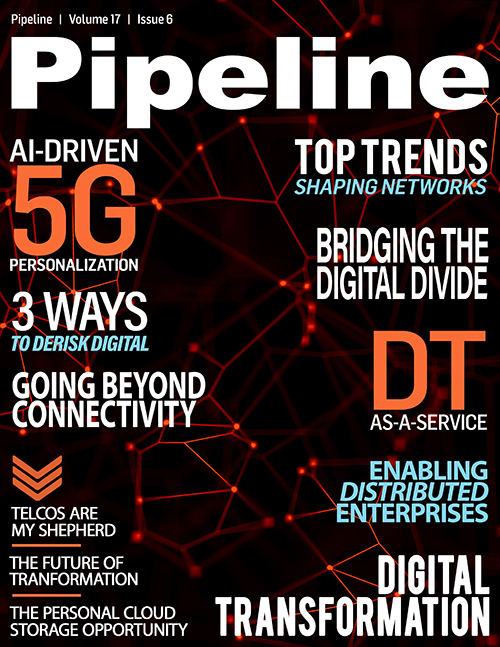The Advent of Digital Transformation-as-a-Service (DTaaS)
By: Philip Molter

The concept of Digital Transformation (DT) has been the subject of a great deal of hype. The excessive focus on DT, which is sometimes called DX, can make it a little confusing to sort out what it actually means for businesses and their IT organizations. And, while it can be tempting to dismiss such a hyped tech paradigm, this one is real and it’s happening now. In fact, DT is coming more rapidly than most people would have predicted. This article looks at some of the drivers of the DT trend and offers insights into what it will take to make the most of it—including DT’s impact on the network and data center as well as the potential for DT-as-a-Service (DTaaS).
DT as a strategy
DT can mean more than one thing. At this point, however, two basic types of transformation are taking place. One is a deliberate, strategic process that leads to deep, well-planned changes in the way a business functions. The other is by necessity, driven by last year’s move to a remote workforce, and all the related IT implications of the COVID economy.
DT as a strategy can take a wide variety of forms. In almost every iteration, the intention is the same: to leverage the latest digital technologies to transform the relationship between a business and its customers. This might mean using Internet of Things (IoT) devices and mobile apps to create an omnichannel customer experience. In such a scenario, a customer might be able to place a product in an e-commerce shopping cart, call the company to discuss the item, move the shopping cart to a mobile app, pay for it while driving in a car and then pick up the product in a store—all in a single seamless experience. A company that can deliver an omnichannel experience will have transformed itself into a digital business and gained a significant competitive advantage.
DT as a necessity
Many, if not all, businesses today have had some degree of digital transformation forced upon them due to the COVID-19 pandemic. Impacts included a shift to widespread remote working environments and a jump in contactless e-commerce transactions. In some cases, organizations had to shift thousands of workers to home-based locations in a matter of days. Remote education also became a fact of life for millions of students and their families. Everyone had to adapt with extreme speed.
Even as things start to return to normal, a sizable group of employees are likely to remain remote. Harvard Business School research estimates that 16 percent or more of workers will continue to work remotely after the pandemic winds down.
DT as an IT challenge
DT presents many challenges to businesses as well as their IT departments, some of which have nothing to do with technology at all. Getting a business to do things differently involves organizational and human-level change management. Communicating about what’s happening is another significant success factor for DT that is not about IT.
In IT terms, however, DT is complicated. Whether DT is happening by necessity or for a strategic purpose, the change process drives major shifts in the way networks, end users, and infrastructures interact. The demands of the process can stress out an IT organization as well as its strategic partners, device vendors, and external service providers.
Consider the impact of DT on networks. An enterprise undergoing DT will typically want connections from its data center space to the cloud as well as to an increasingly relevant edge compute infrastructure. End users are outside the traditional network today more than ever. Companies thus want to minimize backhaul—while reducing latency—and bolster security. They need network and access management systems that can handle a vastly bigger set of remote logins and remote sessions than they’ve ever had to deal with before. Traditional on-premise data centers and legacy wide area networks (WANs) are not well set up for these new requirements.
DT-as-a-Service
Solving these challenges will require transformation in thinking as much as in technology. To reach the objectives of DT, it will be necessary to contemplate new approaches to delivering applications and other digital experiences to end users. The process calls for new ways of designing and operating both networks and data centers.
In some cases, success may come through working with selected external partners. Given the pressure for transformation, it may also not be feasible to design and build the entire transformed environment on one’s own. Rather, a vendor that can provide an on-demand DT-as-a-Service could be a wise choice.



















